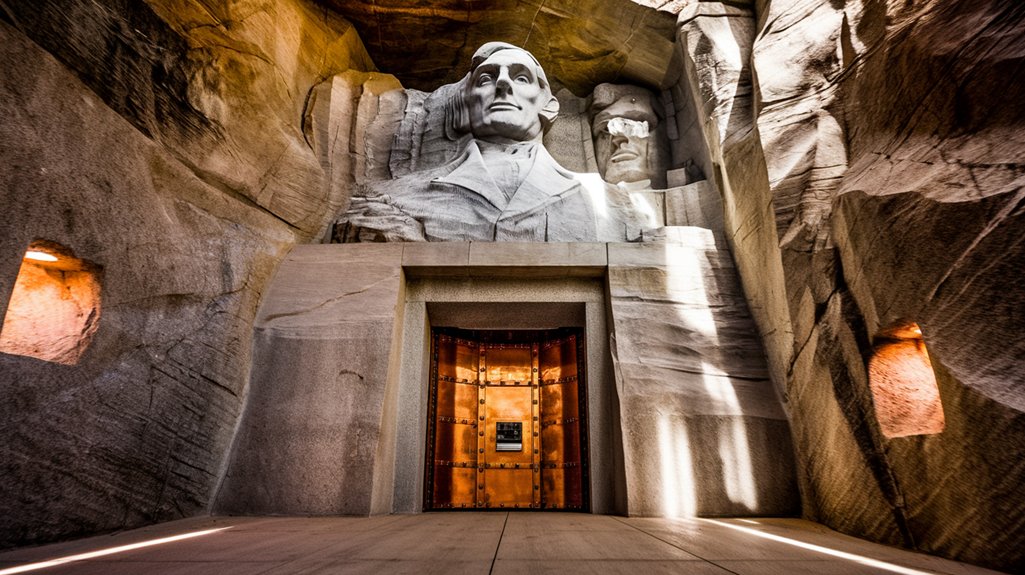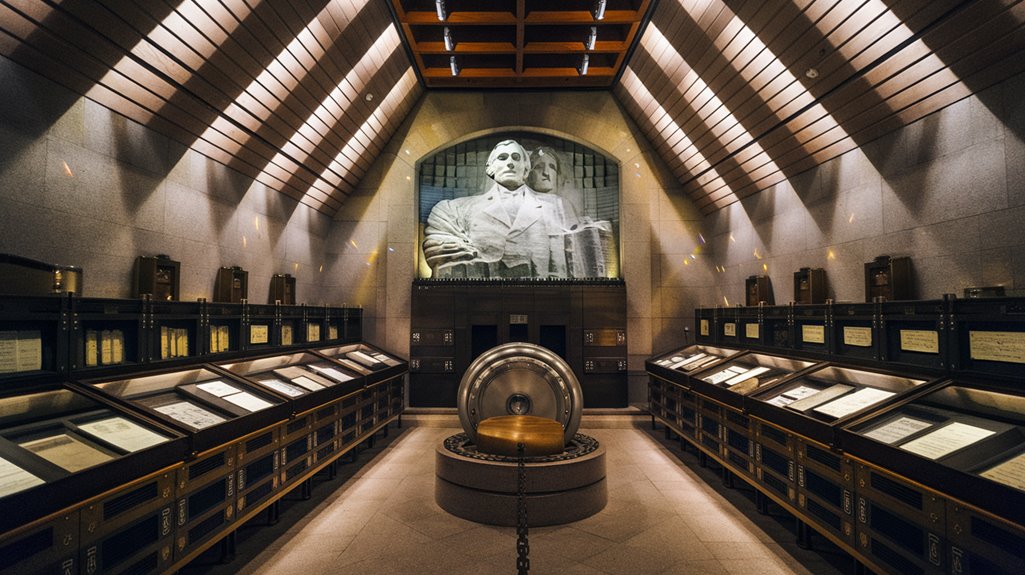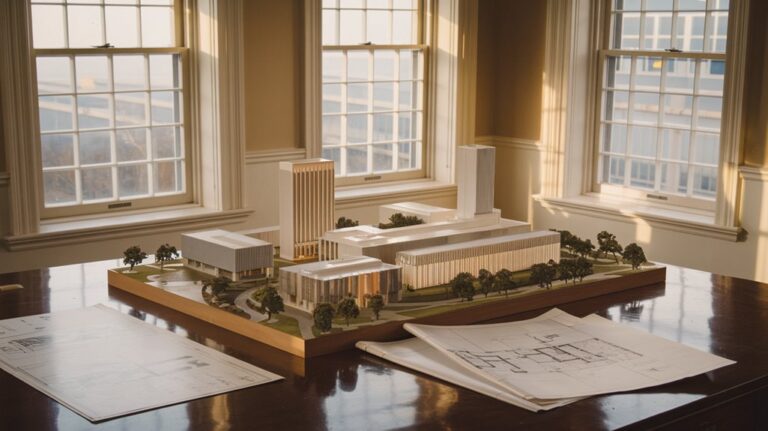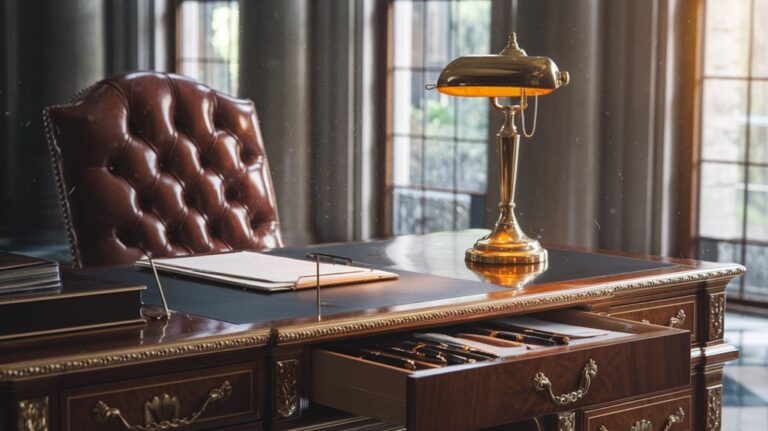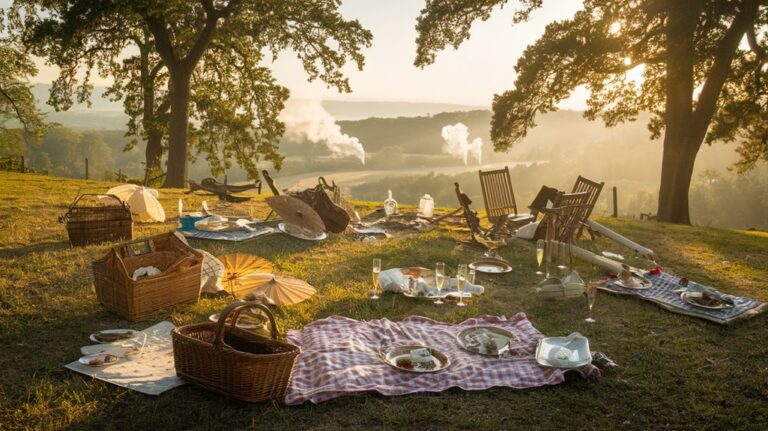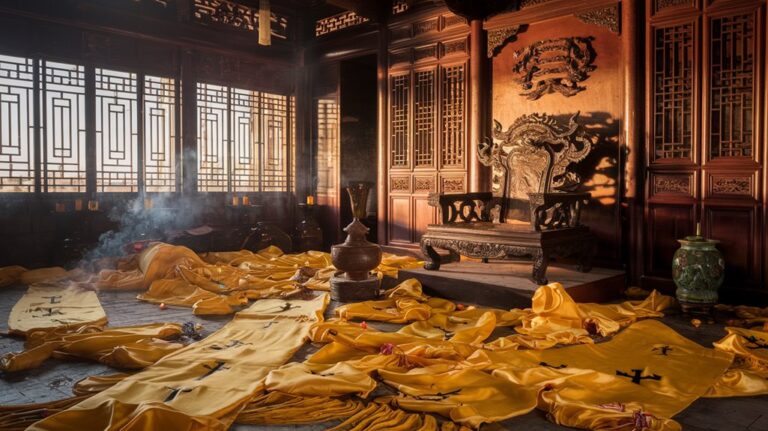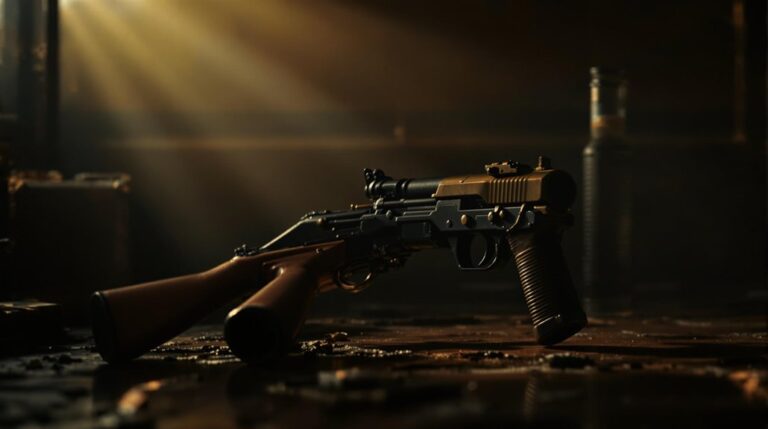A Secret Room Exists Behind Lincoln’s Head on Mount Rushmore
You might think you know everything about Mount Rushmore, but there's a fascinating secret tucked away behind Lincoln's stern gaze. While millions of visitors admire the colossal faces carved into the Black Hills, few realize that a hidden chamber, known as the Hall of Records, lies within the granite mountain. This unfinished room wasn't meant to store treasure or serve as a bunker—it represents one sculptor's ambitious vision to preserve America's most important historical documents for thousands of years to come.
The Visionary Behind Mount Rushmore's Hidden Chamber
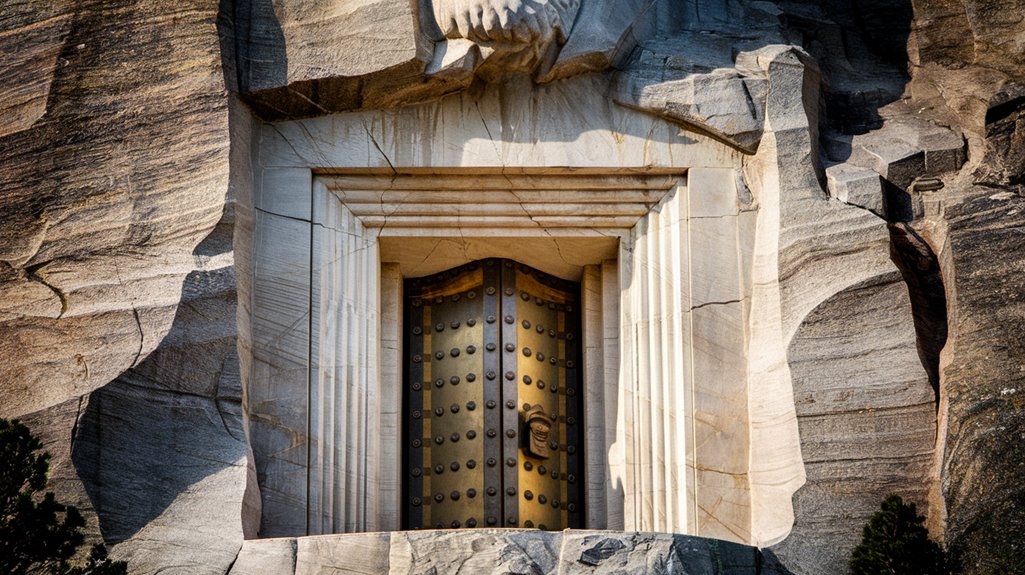
While many know Mount Rushmore for its iconic presidential faces, few realize that its creator, Gutzon Borglum, had an even grander vision in mind.
The Idaho-born sculptor, who'd already made his mark on New York's Cathedral of St. John the Divine, was driven by a deep concern for historical preservation. His original plans included a massive chamber that would stretch 80 feet tall and 100 feet long.
Borglum's inspiration stemmed from his fear that future civilizations might forget their predecessors. Drawing from the enduring legacy of ancient wonders, he found inspiration in structures like the pyramids and Colossus. Despite conflicts with funders throughout his career, he remained committed to creating lasting monuments of historical significance.
For 14 years until his death in 1941, he led the Mount Rushmore project while simultaneously planning a hidden chamber that would preserve America's story.
This secret room, which he called the Hall of Records, would become his ambitious attempt to guarantee that future generations would understand the monument's deeper meaning.
Original Plans vs. Reality: The Hall of Records
Although Gutzon Borglum envisioned a grand Hall of Records with an 800-foot granite staircase and bronze eagle entrance, the reality proved far more modest.
Initial architectural challenges forced him to abandon plans for exterior inscriptions, as the text wouldn't be readable from a distance and would interfere with Lincoln's head placement.
Construction began in 1938 with ambitious plans for an 80-by-100-foot chamber that would house historical artifacts and documents behind bronze and glass cabinets.
You'd have found busts of famous Americans throughout the space, emphasizing its historical significance.
However, Congress redirected focus to the presidential sculptures in 1939, and workers only completed a 70-foot tunnel.
The project's grand vision wasn't realized until 1998, when a smaller repository containing sixteen porcelain panels was installed, preserving Mount Rushmore's story for future generations.
The tunnel, which remains hidden behind Lincoln's head, is completely closed off from public access today.
What Lies Within: Contents of the Secret Room
Today's visitors to Mount Rushmore can't access the secret room behind Lincoln's head, but its contents tell a fascinating story of American history.
Gutzon Borglum initially designed an impressive entrance featuring an 800-foot stairway leading to the grand hall.
Construction halted in 1939 due to funding and left this ambitious archival project unfinished.
Inside this carefully preserved vault, you'll find documents of immense historical significance, all protected for future generations in a teakwood box within a titanium vault.
The Hall of Records houses several key items with future implications for preserving America's legacy:
- 16 porcelain enamel panels chronicling U.S. history and Mount Rushmore's construction
- Original copies of the Constitution, Declaration of Independence, and Bill of Rights
- Detailed biographies of sculptor Gutzon Borglum and his work
- Descriptions of the four presidents featured on the monument
- Records explaining why these specific presidents were chosen
All these treasures rest beneath a 1,200-pound granite capstone, designed to endure for thousands of years.
The Unfinished Dream: Construction and Challenges
Despite Gutzon Borglum's grand vision for Mount Rushmore, the iconic monument you see today represents only a fraction of his original plan.
Initially, he'd intended to carve the presidents down to their waists, but funding challenges and World War II forced a scaled-back version.
The construction techniques were both innovative and dangerous. Original plans included carving Western historical figures before Borglum decided on presidents instead.
Workers removed 450,000 tons of rock, using dynamite for 90% of the carving before switching to precise honeycombing methods.
You might be amazed to learn that despite the perilous conditions, no workers died during the 14-year project.
They climbed 700 stairs daily, battling extreme weather while suspended in bosun chairs.
When Borglum died unexpectedly in 1941, his son Lincoln completed the final touches before the project shut down that October.
The monumental work required skilled craftsmen, including chief carver Luigi Del Bianco who was appointed in 1935 to oversee the most precise aspects of the sculpting.
Preserving History for Future Generations

The preservation of Mount Rushmore's massive carved faces requires a year-round commitment from a specialized team of experts.
Through sustainable practices and heritage conservation efforts, you'll find dedicated specialists working to protect this iconic monument using advanced technology and time-tested techniques.

